- Author Jason Gerald [email protected].
- Public 2024-01-15 08:07.
- Last modified 2025-01-23 12:04.
This wikiHow teaches you how to enable and use Remote Desktop on two computers running Windows 7. Remote Desktop is a built-in feature of Windows 7 that allows you to control a computer from another computer over the internet. If you want to use Remote Desktop, enable this feature on the target computer, then find the IP address for that computer. Once this is done, you can connect the desired computer to the target computer.
Step
Part 1 of 4: Enabling Remote Desktop
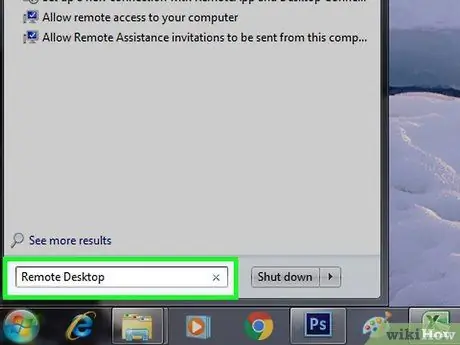
Step 1. Meet the requirements to enable Remote Desktop
If you want to enable this feature, you must be logged in to an administrator account, and the account must have a password enabled.
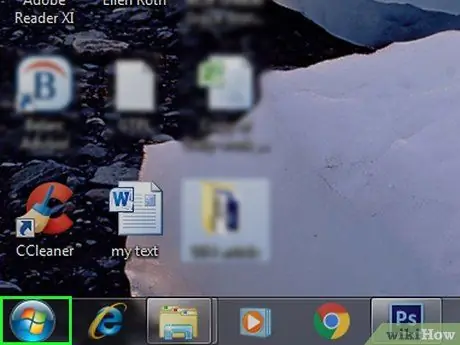
Step 2. Go to Start
Do this by clicking on the colorful Windows logo in the lower-left corner. This will bring up the Start menu.

Step 3. Click Control Panel which is on the right side of the Start menu
The Control Panel window will open.
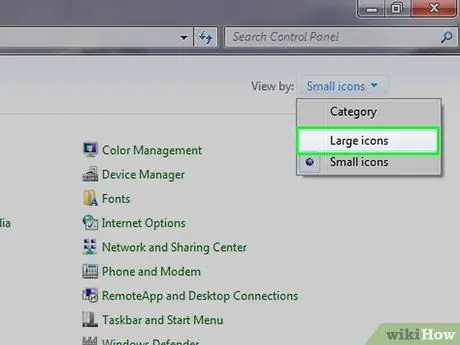
Step 4. Set the "View by" option to "Large icons"
Click the " View by: " drop-down box at the top right of the Control Panel window, then click Large icons in the drop-down menu that appears.
Skip this step if you see " Large icons " next to the " View by: " heading
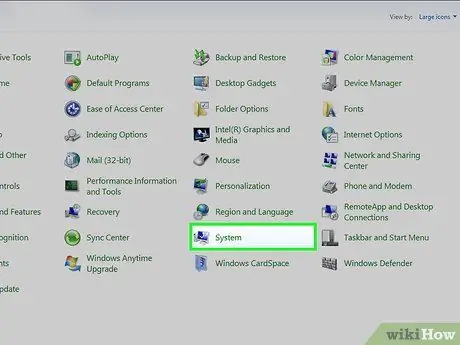
Step 5. Click System
This heading is at the bottom of the window.
You may have to scroll down to find this option
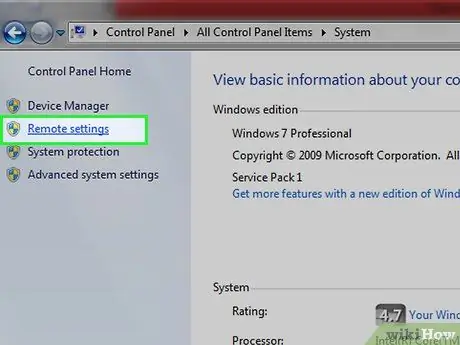
Step 6. Click Remote settings
This link is in the upper-left corner of the window. A new window will be opened.
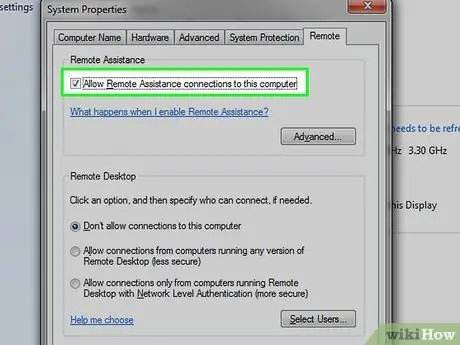
Step 7. Check the "Allow Remote Assistance connections to this computer" box
The box is at the top of the new window.
- If this option is not present, first check that you are in the correct tab by clicking Remote located at the top of the window.
- Once the box is checked, skip this step.

Step 8. Check the box "Allow connections from computers running any version of Remote Desktop"
It's in the middle of the pop-up window. This will allow you to connect to that computer from any computer (such as a computer running Windows 10) that opens Remote Desktop in the future.
Once the box is checked, skip this step
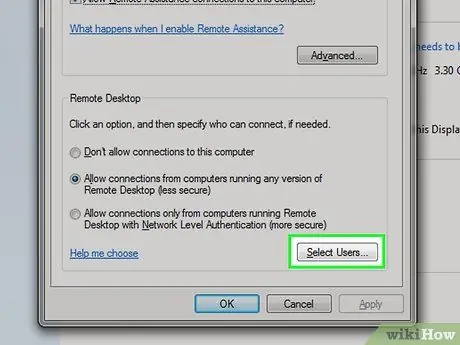
Step 9. Add other users if necessary
You can allow Remote Desktop to access other user accounts on the target computer by doing the following:
- Click Select Users….
- Click Add.
- Click Advanced….
- Click Find Now.
- Scroll to the pane at the bottom of the window and double-click the name of the user you want to add.
- Click OK at the top of the two windows that open.

Step 10. Click OK
It's at the bottom of the window. Your settings will be saved, and Remote Desktop on the target computer will be activated.
Part 2 of 4: Allowing Remote Desktop in Firewall Settings
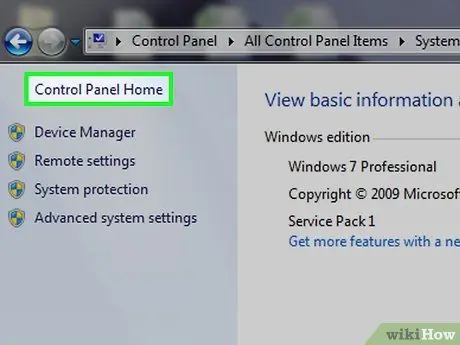
Step 1. Click the Control Panel Home link
You can find this link in the top left corner. The main Control Panel window will open.
If you have closed it, reopen Control Panel before continuing
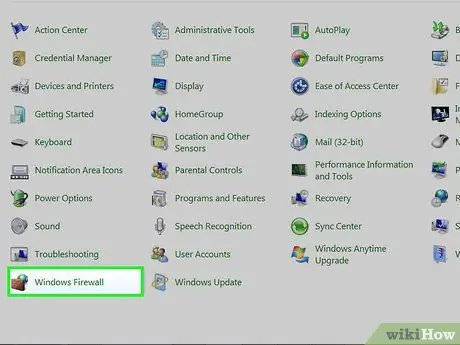
Step 2. Click Windows Firewall which is in the list of Control Panel options
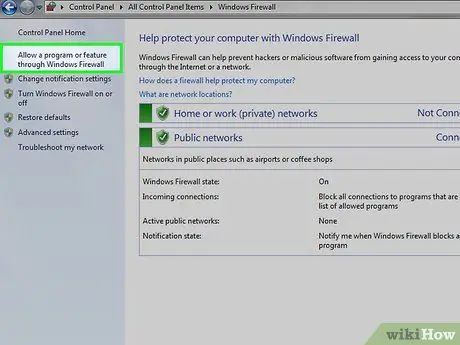
Step 3. Click Allow an app or feature through Windows Firewall
This link is in the top left corner.
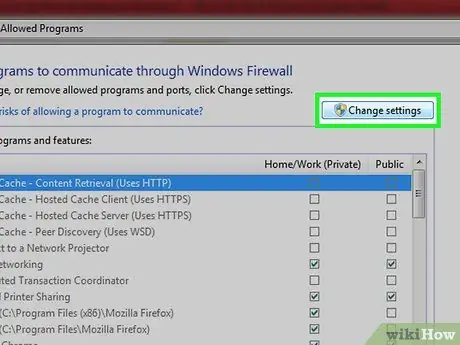
Step 4. Click Change settings
This option is at the top of the page, above the program list in the middle.
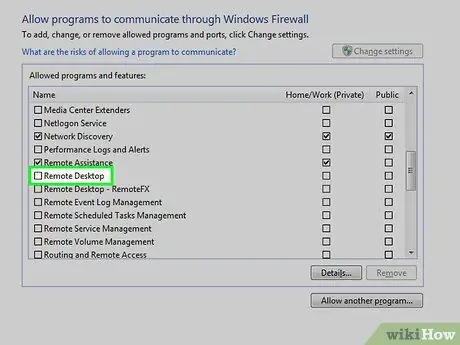
Step 5. Scroll down the screen and check the box "Remote Desktop"
The box is in the "R" section of the program list. By doing so, Remote Desktop has been allowed through the Windows Firewall.
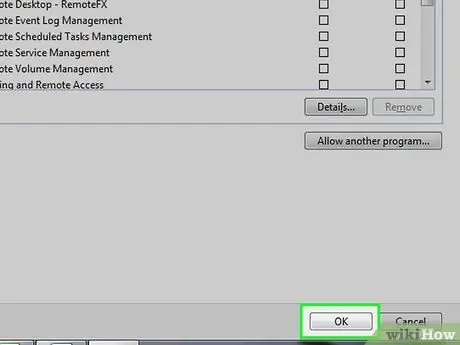
Step 6. Click OK at the bottom of the window
The changes you make will be saved.
Part 3 of 4: Finding the Target Computer's IP Address
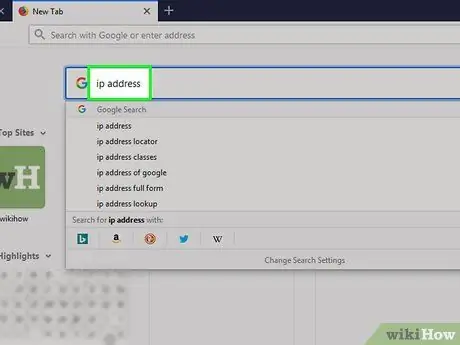
Step 1. Try assigning a static IP address
This step is optional, but recommended. Static IP addresses cannot be changed even when the router is disconnected or when the computer is reconnected to the network. This means that the IP address you are looking for now can still be used in the future. If you don't do this, you'll have to re-find the target computer's IP address each time you want to connect to that computer. Assign a static IP address by going into router settings:
- Find the router's IP address.
- Open the router's IP address in a web browser, then log in using the router information when prompted.
- Look for the list of currently connected computers, then select your computer.
- Create a static IP address by clicking on the lock icon or another similar icon.
- Wait for the router to finish rebooting.

Step 2. Launch the web browser
On the target computer, double-click the web browser icon (eg Chrome).
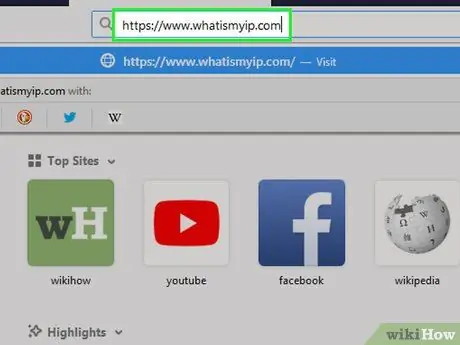
Step 3. Visit WhatIsMyIP
Visit https://www.whatismyip.com/ in the target computer's browser.
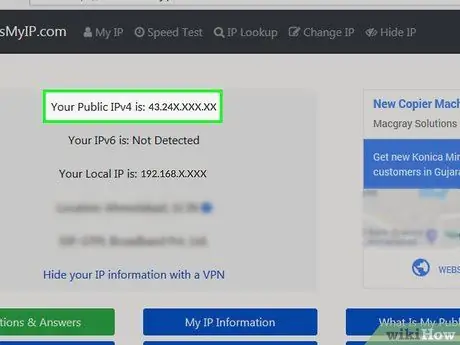
Step 4. Find the target computer's public IP address
You'll find the target computer's public IP address next to the " Your Public IPv4 is " heading at the top of the page.
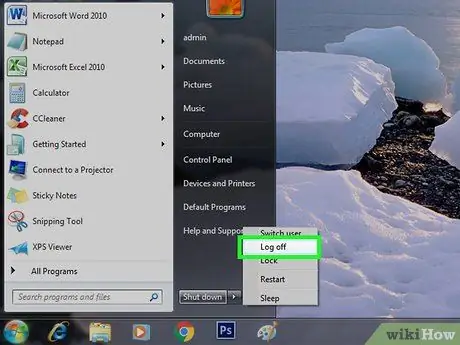
Step 5. Log out of the target computer
Click Start, click icon
in the lower right corner of the Start menu, then select Log off. At this point, you can connect to the target computer using a different Windows 7.
Part 4 of 4: Connecting a Computer via Remote Desktop

Step 1. Go to Start
on another computer.
Do this by clicking the Windows logo in the lower-left corner.
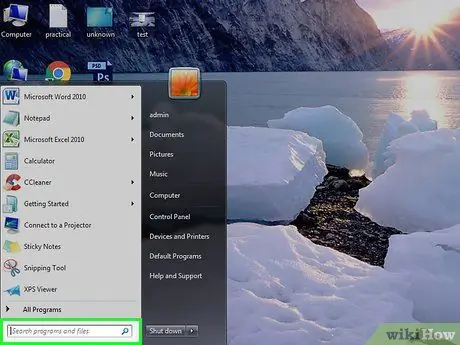
Step 2. Click the search field at the bottom of the Start window
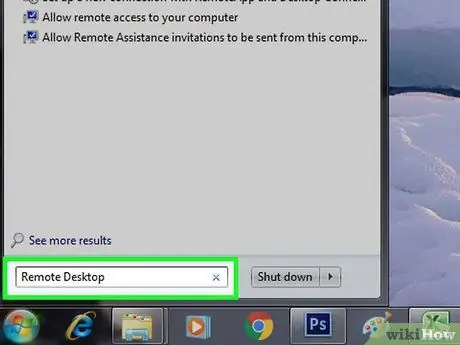
Step 3. Look for Remote Desktop
Do this by typing remote desktop. A list of your search results will appear in the Start window.
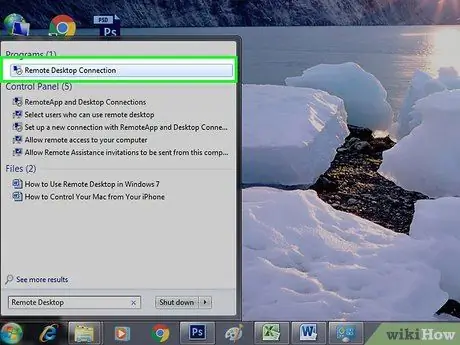
Step 4. Click Remote Desktop Connection
This option will appear at the top of the search results in the Start menu. The Remote Desktop window will open.
You can also click Remote Desktop here.
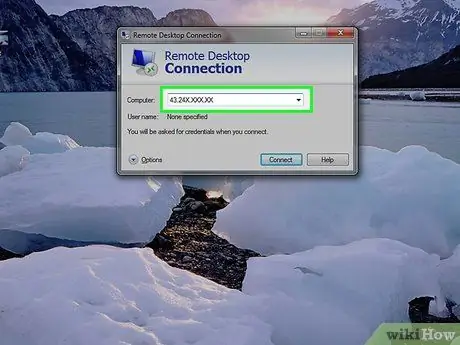
Step 5. Type in the IP address of the target computer
Click the " Computer " text box in the center of the Remote Desktop window, then type in the target computer's public IP address.

Step 6. Click Connect at the bottom of the window
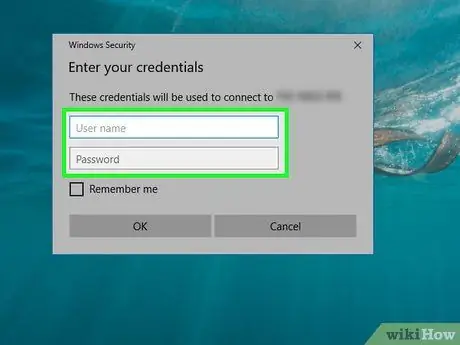
Step 7. Type in the target computer's login information
When prompted, type in the administrator name and password for the account that Remote Desktop has enabled.
If you have added another user on Remote Desktop, enter the required login information to access the account
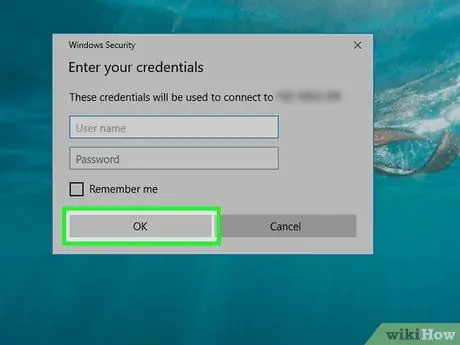
Step 8. Click OK at the bottom of the window
Doing so will allow your computer to connect to the target computer, although you may have to wait a few minutes for the connection to complete. Once the other computer's desktop is displayed in Remote Desktop, you can browse the target computer at will.
Tips
- Remote Desktop is designed for IT environments. However, you can also use it to access and/or send files from home or work.
- If Remote Desktop doesn't work, you can install and use TeamViewer instead.
Warning
- It is recommended that you disable Remote Desktop when it is not being actively used.
- If a static IP address for the target computer is not assigned, you must look up the computer's public IP address each time you want to connect remotely. This means, you have to ask someone with access to the computer to find its IP address.






